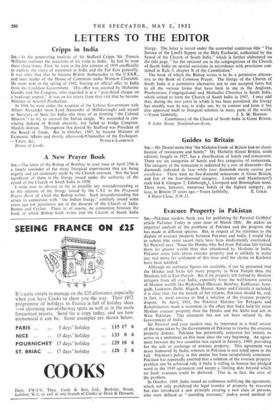A New Prayer Book SIR,—The letter of the Bishop of
Bombay in your issue of April 25th is a timely reminder of the many liturgical experiments that are being eagerly and yet cautiously made by the Church overseas. Not the least significant of them is the liturgy issued under the authority of the synod of the Church of South India in 1950.
I write now to obviate as far as possible any misunderstanding as to the relation of the liturgy issued by the C.S.I. to the Proposed Prayer Book of which the Bishop writes. Such misunderstanding has arisen in connection with "the Indian liturgy," similarly issued some years ago for permissive use in the dioceses of the Church of India, Burma and Ceylon. There is, of course, no connection between the book of which Bishop Lash writes and the Church of South India liturgy. The latter is issued under the somewhat cumbrous title "The Service of the Lord's Supper or the Holy Eucharist, authorised by the Synod of the Church of South India," which is further elaborated on the title page, "for the optional use in the congregations of the Church, of South India on special occasions in accordance with provisions con- tained in Rule 5, chapter X of the Constitution."
The book of which the Bishop writes is to be a permissive alterna- tive to the Book of Common Prayer. The liturgy of the Church of South India is a permissive alternative not to one accepted form but to all the various forms that have been in use in the Anglican, Presbyterian, Congregational and Methodist Churches in South India, which united to form the Church of South India in 1947. I may add that, during the two years in which it has been permitted, the liturgy has steadily won its, way to wider use; by its content and form it has also approved itself to liturgical scholars in many parts of the world. —Yours faithfully, J. S. M. HOOPER. Commissary of the Church of South India in Great Britain. 9 John Street, Stratford-on-Avon.


































 Previous page
Previous page